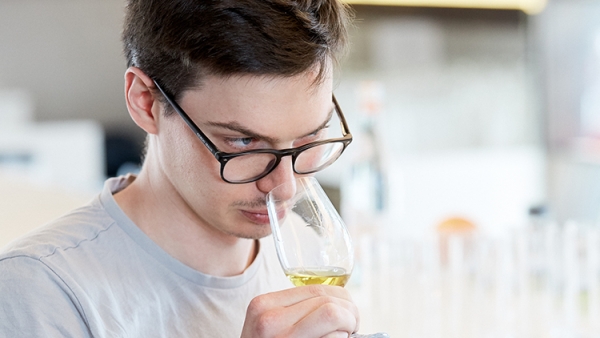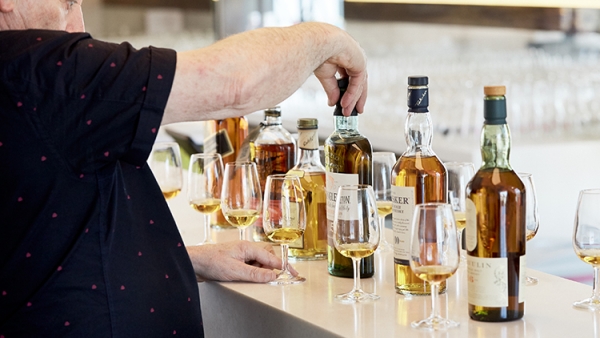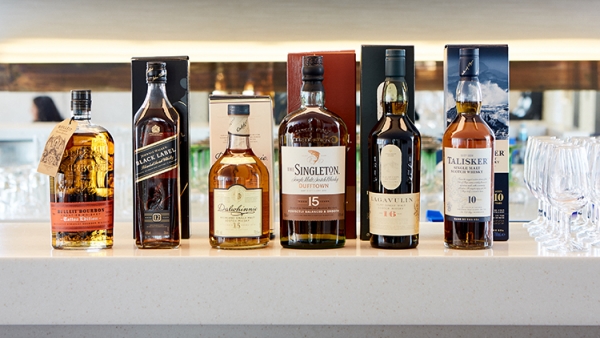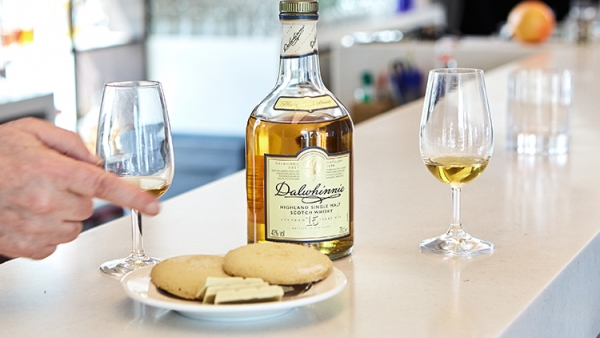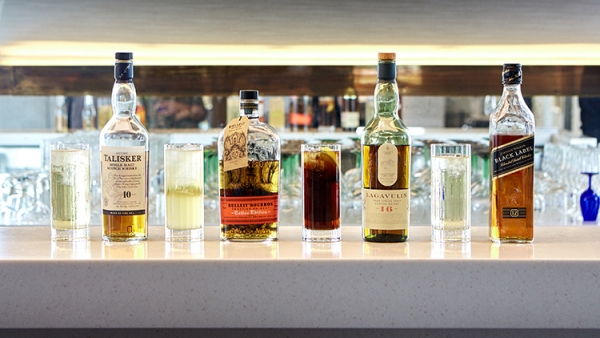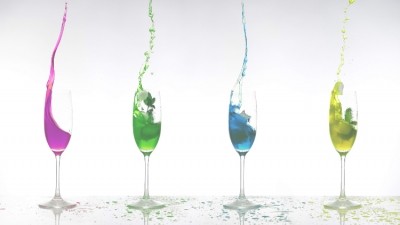Whisky masterclass: sponsored by Diageo
The ultimate whisky masterclass
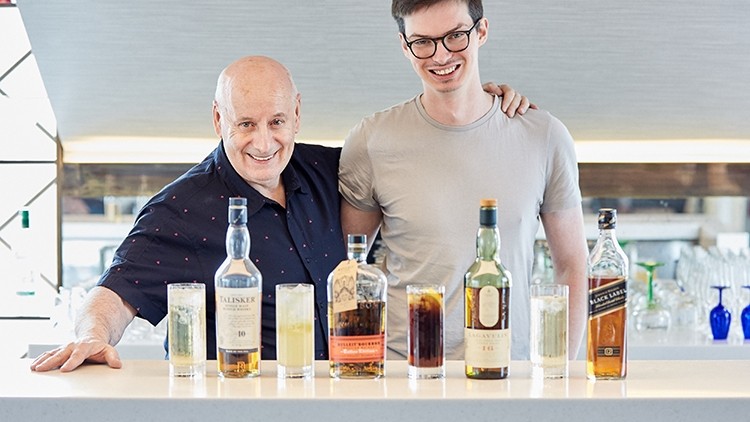
This has not been an organic shift in reputation, though. In recent years, much work has gone into turning the category around to ensure that drinkers’ options, when it comes to whisky, are beyond just three – neat, with ice or with a splash of water.
The people driving this change of mind are those such as Diageo whisky ambassador Colin Dunn, but also the operators at street level, such as Max Murdy-Flisher of the Strongroom Bar in Shoreditch, who took part in a whisky masterclass with Dunn last month.
In the session, which The Morning Advertiser crashed, Dunn showcased every whisky element to consider, from the basics of nosing and tasting the neat spirit, to mixing and pairing with food.
Yet, those who haven’t seen a change in mentality need only look at the types of whiskies that are consumed in the UK. For example, in the past, it was mostly single malt Scotch, but now much of the market is made up of blended Scotch, which is worth £23bn (IWSR 2018), says Dunn.
“Within whisky, there was just Scotch, American and Japanese a few years ago, but now if you go to the bars in the likes of Shoreditch, there are whiskies from Taiwan, Spain and from everywhere around the world,” explains Dunn.
“They are distilling and maturing whisky everywhere and the category is changing.”
A new world of flavour
The general public, from the age of 18 to 88 and beyond, he continues, is open to this new world of flavour, which they believed was closed to them.
What is driving them to the category and expanding their dialogue within it are things like television shows, such as Sunday Brunch, that are making it acceptable for consumers to talk about the aroma, taste and mouthfeel of the whiskies they are drinking.
Previously, Dunn explains, such talk about a drink was the reserve of the upper echelons of wine drinkers and perhaps the single malt drinkers and, as a result, is one of the reasons whisky has been slow to be picked up by modern-day consumers – because it was believed to be haughty.
Another element of whisky drinking that is being left behind is around the age of the spirit itself. “Age now is not considered as important as it used to be,” argues Dunn. “Today, we have whiskies in front of us that are two to 16-years-old.
“Judging whisky on its age is basically just saying that because something is old it tastes better, but that’s not true, it just tastes different and we should be celebrating different tastes, rather than the age of something.
“One is not better than the other. One is different to the other.”
How to nose and taste a whisky according to Colin Dunn:
“When it comes to whisky, there are four basic words you can use: sweet, spicy, smoky and fruity.
“Those four words are understood globally and have an impact based on taste, so my way of projecting whiskies in 2019 going forward is to create serves that fit into those categories but, instead of having regions on a menu, I would have taste descriptors. So if I had 20 whiskies, I would have four groups of five, based on those descriptors.
“I remember in the early days when I used to go into a cocktail bar the bartender would ask ‘what can I get you?’ and I wouldn’t often know, so the question he or she would ask me is ‘what kind of flavours do you like?’. I might say orange or citrus or lemon and the bartender would then make a cocktail based around those words.
“So, going back to understanding what the consumer enjoys helps in forming your recommendations.
“Being able to say with complete confidence to the customer that an extra few seconds on tasting whisky makes a complete difference.
“In the food world, slow food has been about slow cooking and slow eating to get maximum flavour from that food.
“Guess what, it’s exactly the same as whisky; just by giving it an extra few seconds in the mouth, the whisky gives up its DNA. In the past, a lot of people have been drinking whisky straight down like they’ve been to an art gallery but not looked at the pictures. Yet, a few seconds labouring the whisky in the mouth will give you the DNA of that whisky, so it’s about time in the mouth.
“The first thing is to get your nose working and it takes two to three sniffs to get it going.
“Start a tasting by literally shaking things up. You will awaken the whisky if you slosh and swirl it around the glass to get the compounds working and opening up.
“Then breathe it in.
“Pick up a different whisky and do the same thing. Swirl it. You should realise on the second smell that it is a lot different to the first whisky. Try this with as many whiskies as you can.
“This is awakening your senses and smell. It’s kicking in and you can pick up more smells as a result.
“It’s important to use smell because it’s a big part of tasting, not just whisky, but any food or drink with an aroma.
“Once you have nosed four or five different types you won’t really be smelling alcohol anymore, but the different aromatics in the whisky.
“Some of the aromas will become clearer because your nose is more attuned to different aromatics.
“You can then start to taste the whiskies. Take a little into your mouth and chew it over as you would with a wine, perhaps let a little air in to get the flavours moving and opening. Think about its mouthfeel and then swallow it, what sort of finish does it have and how does that differ to the aroma and mouthfeel?
“Overall, in a whisky tasting, we’re looking for aroma, mouthfeel and finish or a beginning, a middle and an end like a book.”
As already outlined, the move towards how something tastes, rather than purely what age it is, has helped to drive interest around brands such as Johnnie Walker Black Label, which is a blended Scotch created to appeal to many tastes globally, adds Dunn.
“Johnnie Walker Black Label is about using a blend that satisfies as many palates as possible across the world – which is a great art – and the art of the master blender is not something that everyone can play around with. We have 28 distilleries we can use to do this like no one else,” he says.
Tackle the stigma
But to get people to taste a whisky, even one developed to appeal to them, can be tricky because of the stigma surrounding the category. Although things are changing, many people still believe a whisky will be too powerful, peaty, smoky or strong for them.
There are, however, ways around this. For instance, Dunn says his friend always claimed to not like whisky, yet after freezing a bottle of Dalwhinnie and pouring it over ice cream, she came around to enjoying whisky more.
Following that, he gave her shortbread and asked her to drink the whisky while eating the biscuit, which created something that could be described as a whisky/shortbread crumble. Following the two food-pairing experiences, she was a whisky convert, he claims.
Such simple and fun experiences go to show that whisky is not a scary, unreachable category for more people to drink from, but quite the opposite. There is a wide spectrum of fun and experience to be had from whisky – whether on its own, with ice, paired with food or mixed into a cocktail.
The six whiskies tasted and their notes:
Johnnie Walker Black Label (smoky)
Rich, smooth, dark fruit notes. A creamy vanilla smoothness and smoky finish
Bulleit Bourbon (spicy)
The unique high rye content of Bulleit Bourbon provides a bolder, spicier character that is noticeably drier and less sweet than most other Bourbons. The Bourbon’s finish is long, dry and satiny with a light toffee flavour
Dalwhinnie (sweet)
Dalwhinnie 15-year-old has smooth, soft and lasting flavours of heather-honey sweetness and vanilla followed by deeper citrus-fruit flavours and hints of malted bread
The Singleton, Glendullan (fruity)
Light, fresh and sweet. American oak brings subtle, honeyed hints to The Singleton of Glendullan range, with a touch of European oak offering a balancing dryness. It’s this combination that rounds off the edges and enhances the vanilla and orchard fruit flavours
Talisker 10-year-old (spicy)
The Talisker family all have a peated, smoky flavour. This flavour comes from the peat burned during the malting process. Beneath the smoke you’ll find soft fruits and cereal notes, and in the older expressions a rich vanilla imbued by the ageing process
Lagavulin 15-year-old (smoky)
Aged in oak casks for at least 16 years, the result is an intense, peat-smoke aroma with seaweed and some sweetness, salty and sweet flavours with hints of wood and a long peaty-salt finish
However, sometimes both bar staff and customers can feel a little put out when it comes to the category. “I think bar staff can be intimidated by whisky and it’s something that we can always feel short on,” says Flisher at the masterclass.
“It’s something that we [at my bar] want more of, it’s also quite difficult because our team is very young and a lot of them probably don’t drink it or drink at the higher stages of it. It’s about trying to remove the snobbery around whisky.”
The ultimate learning from the session, however, was that whisky is there to be enjoyed by whoever is consuming it.
How to pair whisky with food, according to Colin Dunn:
“In many ways, chefs are like bartenders; they are like mixologists and are creators who are always looking to serve a meal with a flavour that will entice customers into coming back and trying more variations. Chefs, for a long time, have not realised that whisky has a veritable cornucopia of flavours that have not really been tapped when it comes to pairing with food.
“So, whether it’s a simple format like pairing with cheeses, cold meats or fish, the variety that food offers to the whisky category means that chefs in modern-day bars are able to create new flavour profiles.
“The definition of whisky with food to me is about the beginning, the middle and the end: is the aroma enticing, is the mouthfeel lasting and is the finish leaving you with a memory of the food that you have just tasted? It’s just like having a whisky on its own.”
Talisker (spicy)
This works with smoked salmon, sometimes with a splash of lemon juice and definitely black pepper. Also, it works well with oysters, particularly North Atlantic oysters, which are really salty.
It just makes you want to have more and more of the whisky and the oyster combination because that works really well with the flavours in the whisky. It is very moreish…
The Singleton, Glendullan (fruity)
Chocolate works well with The Singleton. You could have fruit cake, but I often pair with dark chocolate, at least 70% cocoa, which works well with this rich fruity whisky.
Mush the chocolate and chew it up before sipping the whisky. It’s like a chocolate liqueur.
It’s rich and intense and the whole experience has a beginning, a middle and an end
Dalwhinnie (sweet)
Shortbread or white chocolate work perfectly with Dalwhinnie. The shortbread really brings out the honey flavours of the whisky, you can make almost a whisky crumble in your mouth.
I’d also suggest putting this whisky in the freezer for a few hours until it thickens a little and then pour it over a delicious ice cream in place of a butterscotch sauce – obviously it’s only for adults
Bulleit (spicy)
You can use white chocolate and shortbread with this too. It’s a very friendly whisky that works with a lot of sweet foods
How to mix whisky into drinks:
“In this day and age, with new people tuning into whisky like never before, it’s really down to the establishment to create something that excites the new whisky drinker,” says Colin Dunn.
“In the old days, it would have really been about naming the brand along with the alcohol strength and price, but not anymore. Now it’s about creating a serve that is simple and easy to execute, that will give the customer an experience that is not just emotionally satisfying, but appeals to their senses regarding flavour.
“For that, we really need to look at the things that are happening on the other side of the world. In Japan, where the younger drinkers are turning on to the highball category and with the growing interest in mixers these days, you can play around with the flavours whisky gives in so many ways.
“A simple serve, for example, of Talisker with soda water is effervescent, minerally and fresh and you still get the flavour of the whisky but with the bubbles in the soda creating, from a scientific perspective, endorphins. It gives you an emotional taste experience.
“This is where mixers really come into play, whether it’s the new breed from the other side of the globe like coconut water or green tea – or we go for the traditional types like soda water or cola.
“We’ve got to present it as a professional long and cold drink, which is helping to change perceptions. You can drink it when it’s hot and balmy outside in a nice balloon glass with ice cubes, so it’s refreshing, cold and you can still taste the spirit.”
Cocktails:
- Talisker & Soda Highball: Fill highball glass with ice 50ml Talisker 10-year-old and top up with 150ml soda water before garnishing with a pinch of white pepper
- Bulleit & Grapefruit Highball: Fill highball glass with ice and 50ml of Bulleit Bourbon before topping with 150ml of grapefruit juice
- The Smokey Cokey: Fill highball glass with ice and 50ml Lagavulin 16-year-old, before topping with 150ml of cola
- Johnnie & Ginger: Fill highball glass with ice and 50ml Johnnie Walker Black Label and top up with 150ml ginger ale
Max Murdy-Flisher, Strongroom Bar, Shoreditch:
“I think bar staff can be intimidated by whisky and it’s something that we can always feel short on.
"It’s something that we [at my bar] want more of. It’s also quite difficult because our team is very young and a lot of them probably don’t drink it or drink at the higher stages. It’s about trying to remove the snobbery around whisky.
“I don’t think that we have stigma around not being able to do what you want with whisky necessarily, but there is a little issue with how to drink it in ways other than neat or with ice.
“I think there’s a rich heritage to it and, for me, it’s something I have got into over the past three or four years. Not necessarily that people don’t like it, they just don’t have a favourite one.
“But I understand that, because I struggle with gin – they all taste the same to me.”
This piece was sponsored by Diageo
Diageo launched an Adult Drinks Report earlier this year which uses market-leading insight to identify the opportunities for growth within the adult drinks sector and shines a light on how and where consumers want to experience drinks. The report forms part of our new category initiative ‘Transforming Drinks Experiences’ which aims to help licensees drive value and unlock the £5.2bn opportunity the category presents.
This feature looks at the ‘Exploration’ pillar in detail with a focus on how the perception of whisky is changing and how tradition is opening up to innovation across brand, flavour and categories.
With the renewed interest across the category, Diageo are overcoming consumer barriers to make whisky more accessible for all to discover.
